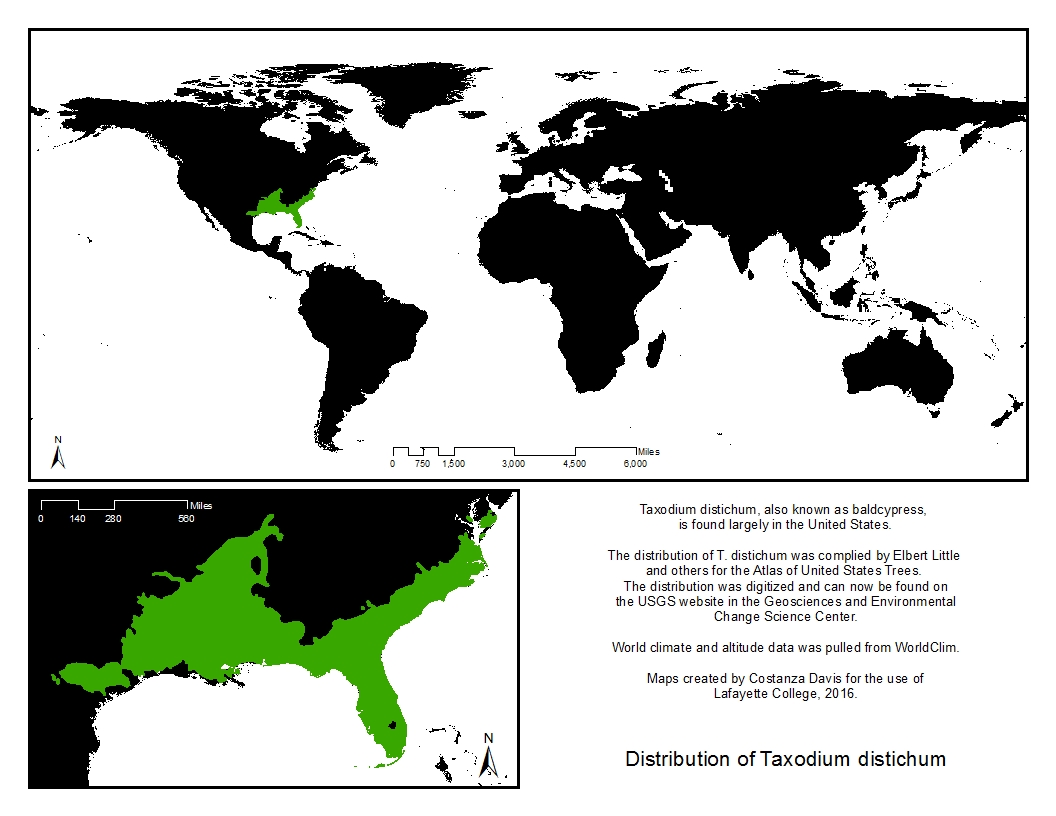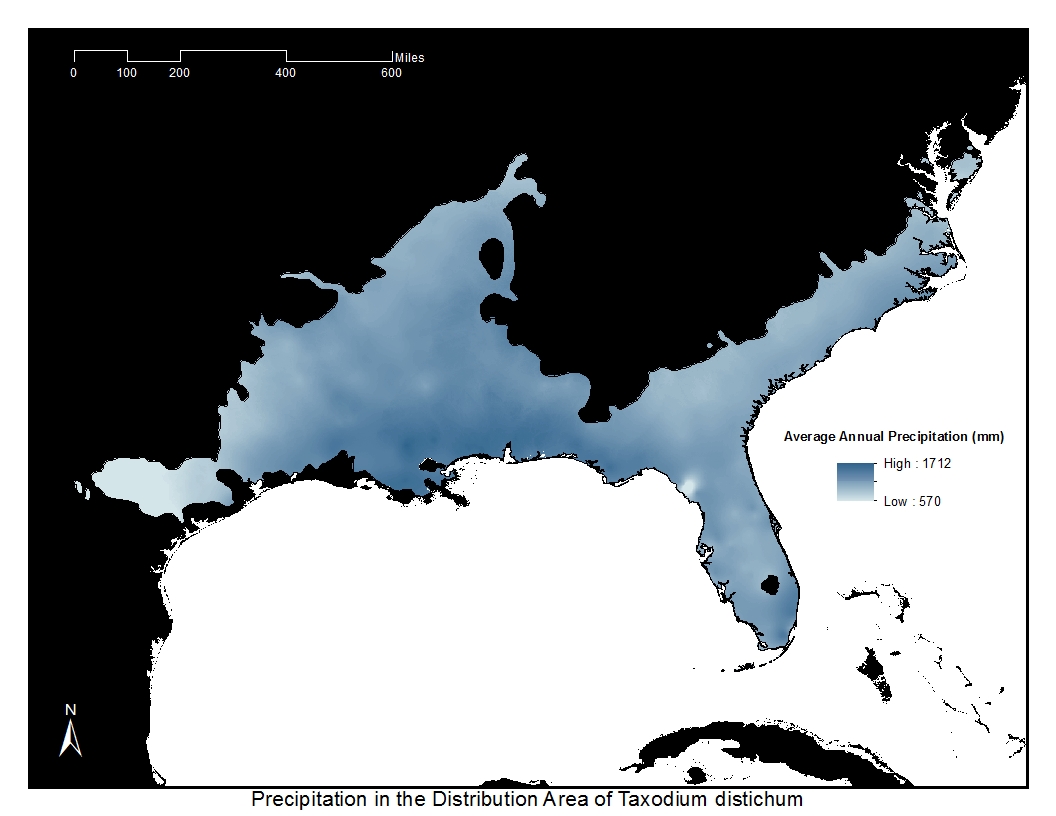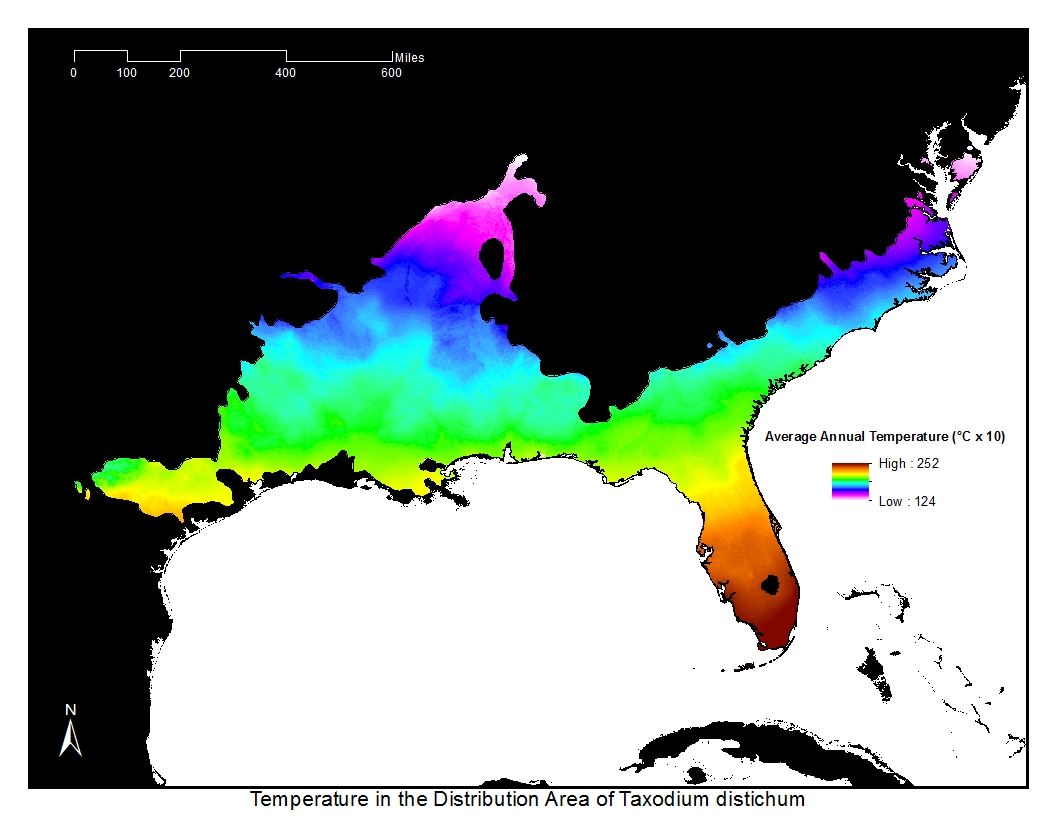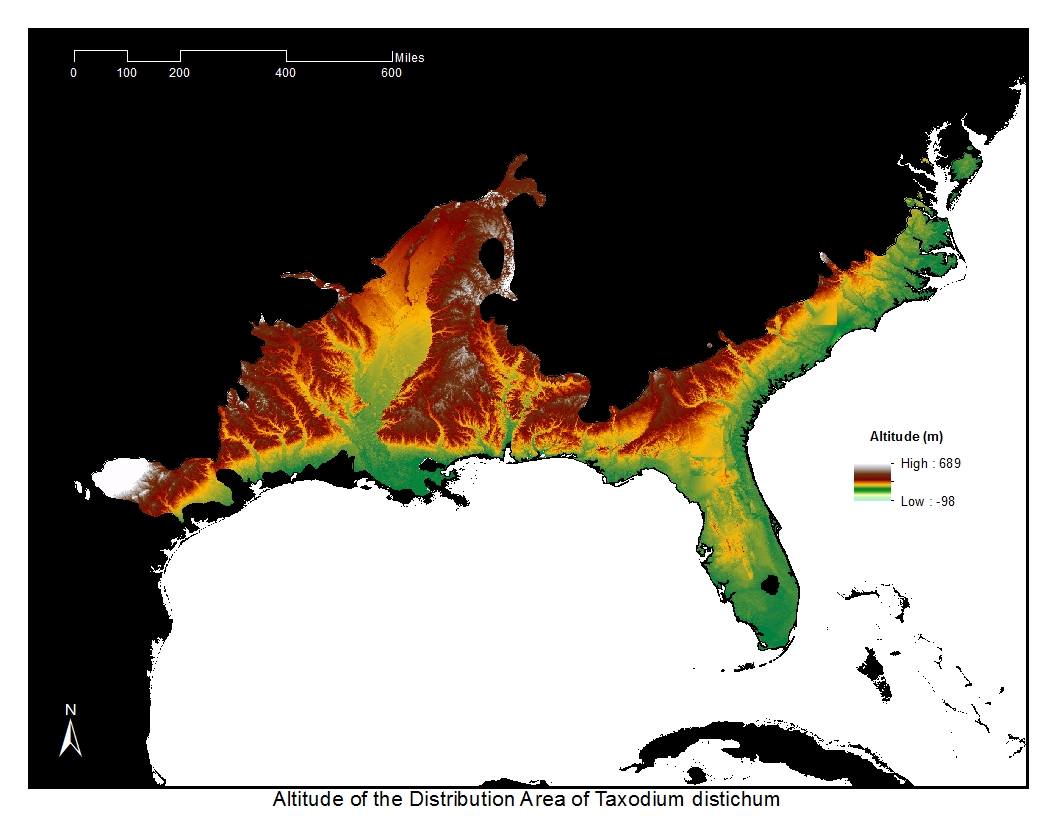The bald cypress, scientifically known as Taxodium distichum, is a deciduous conifer, whereas conifers are typically thought of as evergreen. This means that the bald cypress sheds its needles annually, in the fall. Unlike many other conifers, the bald cypress can also produce sprouts from the stumps of trees up to 60 years of age.
Assessing the age of a bald cypress is difficult, as multiple false rings may be produced as well as the typical annual ring. In forests, 200 years seems to be required to reach a large size, though others have claimed to have identified some trees of over 1,200 years. Either way, the bald cypress can certainly reach large sizes, with 140 to 150 feet in height and 80 to 144 inches in diameter.
Most climates the bald cypress is found in are humid, moist subhumid, or dry subhumid. Notably, however, the bald cypress tends to be found on areas that are often flooded. The flooding can be both frequent and prolonged, with 10 feet of depth. The waters can be stagnant during this period or flowing. Therefore, drainage is considered a more important factor than simple precipitation when determining habitat.
The bald cypress does well near streams labelled “red water” rivers, which have lots of nutrients and potentially a high iron content. It can also be found in other alluvial or even interstream areas, such as swamps. Estuaries are also a viable site, though the bald cypress requires less than 0.89% salt in the water.
While in some areas the bald cypress only grows for a certain period of the year, which can be as short as 190 days, in some places like southern Florida the tree has a growing period of 365 days, or a full year. The bald cypress certainly does best in warmer climates, though it can survive in colder ones with little issue.
No matter the elevation, most bald cypresses are found naturally on flat areas.
As a monoecious tree, male catkins and female conelets are found on the same tree. Typically, mature cones with an average of 16 seeds will develop from October to December. Water is a common disseminator of seeds. Typically the seeds do best to root on wet muck, with some surface water, though not flooded, as the crowns must remain above floodwaters. Some shading is tolerated, but overhead light is best.
The root system and buttressed base of the bald cypress is also capable of withstanding the forces of hurricanes, even in soft, wet soils.
There are two varieties of this tree, nutans and distichum. The baldcypress at Lafayette is believed to belong to the distichum variety, which is the more widespread of the two. The distichum variety is also commonly known as baldcypress, cypress, southern-cypress, swamp-cypress, red-cypress, yellow-cypress, white-cypress, tidewater red-cypress, and gulf-cypress. However, the two varieties can be impossible to distinguish between.




